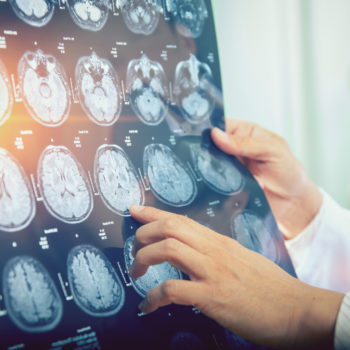The autonomic nervous system may malfunction. One speaks in these cases of neurovegetative dysautonomia or autonomic dysfunction. What is it about or how does it manifest itself? We talk about this topic with Dr. Vincenzo Tullo, Neurologist and Head of the Outpatient Headache Clinic at Humanitas Lab.
How does the autonomic nervous system work?
The nervous system is divided into the central nervous system and the peripheral nervous system. The peripheral nervous system includes the cranial nerves, spinal nerves and ganglia, special groups of neurons that receive information from the receptors. This system is further divided into a voluntary nervous system, responsible for the control of voluntary movements and the collection of information by the sense organs, and an involuntary or autonomous system, which controls involuntary bodily functions. “The autonomic nervous system regulates the activity of the glands and internal organs such as the heart, stomach and intestines, controlling functions such as the dilation of the pupils, the production of saliva and mucus, heart rate, blood pressure, contraction of the bronchi muscles, movements of the stomach and intestines, urine production, relaxation of the bladder wall and the opening of its sphincter – explained Dr. Tullo: when this system does not work we have a neurovegetative dysautonomy (or autonomic dysfunction).
The symptoms
Alteration of the regulation of blood pressure and heart rate with orthostatic hypotension and hypertension in clinostatissm (lying down position), disorders of respiratory function; disorders of the gastrointestinal system with reduction of gastrointestinal motility, dysphagia, constipation, diarrhea; sexual and urinary disorders with nocturia, pollakiuria, urination imperious, impotence, loss of sphincter control; disorders of thermoregulation; hypo-anidrosis and sleep disorders. There are many possible disturbances that can result from a malfunction of the autonomic nervous system. Among the most destabilizing is orthostatic hypotension, which is characterized by a reduction of at least 20 mmHg in systolic blood pressure or 10 mmHg in diastolic blood pressure within three minutes of taking up a standing position and manifests itself with a feeling of light head, tiredness, fatigue, blurred vision and syncope.
Outpatient diagnosis
“Peripheral dysautonomia is finally divided into acute (Guillain Barré’s syndrome, botulism, porphyria, toxicity) and chronic (hereditary neuropathies, diabetic neuropathies, toxic-deficiency, infectious and paraneoplastic neuropathies) – concluded Dr. Tullo – The neurology and diagnostic neuvegetative Clinic at Humanitas can allow the integrated study of the central and peripheral pathophysiological mechanisms of diseases of the vegetative nervous system.










